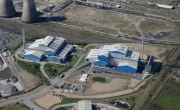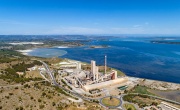No energy-from-waste overcapacity in UK – Biffa
There is currently a capacity gap of 15 million tonnes per year for residual waste treatment in the UK, according to a study released by waste management company Biffa today (23 September).
According to the company’s forecasts, this could reduce to 4.36 million tonnes per year by 2025 with the introduction of a progressive circular economy strategy, but the company says the gap ‘will not disappear completely’.
The report, ‘The Reality Gap: UK residual waste treatment capacity – making sense of the arguments’, assesses UK residual waste treatment needs, and concludes that market forces will lead to a natural balance of capacity.
The study was carried out by researchers from Biffa, which the company says ensured that ‘all assumptions were based on real commercial experience’.
Biffa is one of the UK’s largest landfill operators with 14 operating sites and 65 closed sites that it manages across the UK, but the company currently looking to expand its energy-from-waste operations due to the rising cost of landfilling, as revealed by current Chief Executive Ian Wakelin in April. The company already operates seven refuse-derived fuel sites in the UK and has planning permission for at least two large (300,000-350,000 tonne per annum) incineration facilities.
Findings from Biffa’s report conflict with those published by consultancy Eunomia, which in June stated in its ‘Residual Waste Infrastructure Review’ that the UK is on track to exceed the required level of residual waste treatment capacity by 2019/2020.
Biffa report details
 The Biffa report states that the UK will continue to have a ‘small yet persistent’ capacity gap due to areas with low residual waste arisings not attracting investment for new facilities.
The Biffa report states that the UK will continue to have a ‘small yet persistent’ capacity gap due to areas with low residual waste arisings not attracting investment for new facilities.
However, it stresses that this long-term gap ‘does not imply market failure’, instead representing ‘market equilibrium, the point at which the right amount of treatment capacity will exist’.
Biffa concludes that the UK has the means to manage this balance, but suggests that it will need to utilise certain tools available to it, namely refuse-derived fuel export, domestic energy recovery and treatment.
It also highlights landfill as a ‘vital safety net’ for specialised waste streams, materials rejected from recycling processes, localised treatment capacity shortfalls and disposal of residues from treatment plants.
Regarding the suggested issue of residual waste treatment capacity development suppressing the UK’s recycling ability, as is a growing concern in European countries with high incineration capacity, such as Denmark, the report says that it is not ‘an either/or choice’ and that material recovery facility (MRF) closures in the UK are not caused by EfW plants being built. The UK, it says, ‘needs to address recycling in its own right’.
UK has ‘good range of options’ for healthy development
Jeff Rhodes, Head of Environment and External Affairs, Biffa, said: “Biffa is interested in the reality of the world in which it operates and how market dynamics affect it. It is our view that some published reports to date have not really addressed this.
“At Biffa, we are not interested in political agenda and melodramatic headlines. Rather, we are taking a rational look at the future based on the company’s experience of more than 100 years operating within the UK waste management market.
“What this also shows is that, like Biffa, the UK is actually well-placed going forward. By not putting all its eggs into one basket, the UK has a good range of options available to it, a healthy development pipeline for new infrastructure and the ability to respond flexibly as we make further progress towards a circular economy, but we need to keep all options open and available.”
Mike Thair, Group Business Development Director, added: “A sensible debate about future residual waste treatment capacity needs to be grounded in the realities of supply and demand.
“In particular, any examination needs to look carefully at sub-regional capacity shortfalls, since this is the level at which the market operates.”
Read Biffa’s ‘The Reality Gap: UK residual waste treatment capacity – making sense of the arguments’ report.




